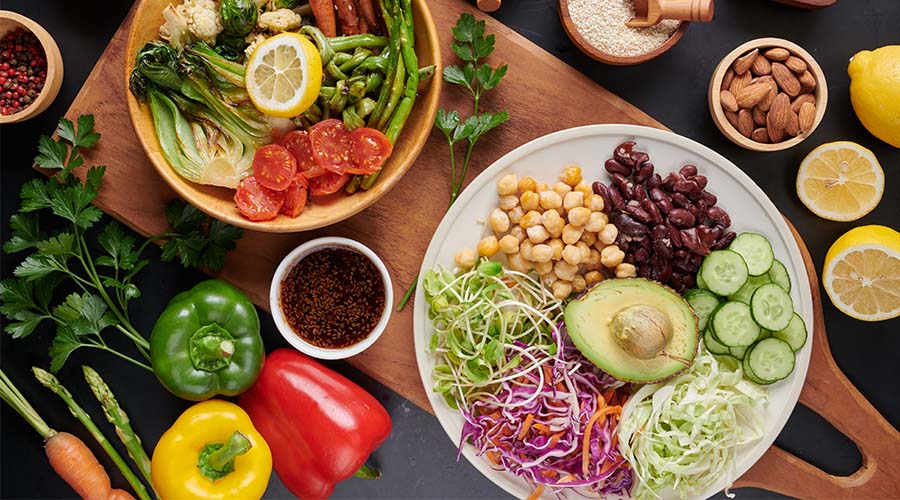
The superfood craze has been gaining a lot of steam lately. But why is it so? Do they have some sort of superpower? Can they fly or read your mind? Of course not! It’s simply a modern label given to foods that are believed to be nutrient-rich and good for health. Social media is often flooded with advertisements that tout some new strange and exotic superfood that is said to do everything from curing cancer to preventing wrinkles. But is the superfood craze really all it’s cracked up to be? Are these foods as miraculous as they seem? Or is this just another food trend that will eventually fade away? Read on to find out.
What Exactly Is A Superfood and What Makes Them So Special?
It seems like every other day, a new food is being crowned a “superfood”. But what does that actually mean? Well, the term “superfood” has no real definition, but it’s generally used to describe foods that are high in antioxidants, vitamins, and minerals. Superfoods have been a buzzword since 1990, but they’ve become especially popular since 2007 when they were mentioned in an issue of Time Magazine. There is a lot of debate surrounding the topic of superfoods. Some people believe that they are nothing more than a marketing gimmick, while others swear by their benefits.
What Are The Different Types Of Superfoods?
There is no one-size-fits-all answer to this question, as the term “superfood” is relative. Some people might consider kale to be a superfood, while others might consider blueberries or acai berries to be superfoods. That being said, there are a few general categories of superfoods that most people would agree on. These categories include organic produce, protein sources, superfruits, herbal supplements, detoxifying foods. Some of the most popular superfoods include dark leafy greens, berries, chia seeds, spirulina, quinoa, legumes, and avocado.
- Dark Leafy Greens: Kale, spinach, and broccoli are packed with vitamins A, C, and K.
- Berries: Acai berries are high in antioxidants and strawberries, blueberries, and cranberries contain vitamin C, fiber and vitamin K. Chia seeds are high in fiber and omega-3 fatty acids, and they also help to regulate blood sugar levels. Goji berries are high in antioxidants and vitamin C, and they have been shown to improve eye health.
- Spirulina: Spirulina is a type of algae that is high in protein and antioxidants. It has been shown to improve cognitive function, lower blood pressure, and boost the immune system.
- Quinoa: Quinoa is a grain that is high in fiber, magnesium, and zinc. It has been shown to help regulate blood sugar levels, improve heart health, and increase energy levels.
- Legumes: This category of food includes beans, lentils, and peas. Legumes are an excellent source of protein, fiber, and vitamins.
- Avocados: This nutrient-rich fruit is loaded with healthy fats, fiber, and vitamins. Avocados are a great source of potassium, which can help to regulate blood pressure. They also contain lutein and zeaxanthin, two antioxidants that can help to protect your eyes from age-related damage.
Most of these superfoods are plant-based, but some animal-based foods, such as salmon, have also been given the title. Packed with omega-3, salmon can help improve eye and brain health.
So, Are Superfoods Real?
There is a lot of talk about superfoods. Are they really as amazing as people say? Some people believe that superfoods can help protect against disease, improve mood, and boost energy levels. The truth is, there is no scientific evidence to support the claim that superfoods are inherently better for you than other types of food. However, that doesn’t mean that they don’t offer any health benefits. Some superfoods such as berries, spirulina, and quinoa are a great way of adding a nutritious boost to your meals. But, today, the term ‘superfoods’ is widely used as a marketing ploy.
If you type superfood in a well-known e-commerce search engine, you’ll see hundreds of products branded as superfoods, including dry fruits, green tea, coffee creamers, and supplements, some of which are highly expensive. Companies make millions by labeling their products as superfoods. And when consumers see products with superfoods on their label, they often think these are healthier than other products, which isn’t necessarily true. They end up spending much more on these superfood-tagged products when they could be receiving more benefits at a lower price by simply buying whole foods like fruits and vegetables. What’s more, many superfood products include proprietary blends of fruit and vegetable powders and they don’t disclose how much of each ingredient or what amount of vitamins, minerals, and antioxidants — a serving contains. As there is no strict definition for it, it doesn’t have any specific regulations surrounding their use on packaging. So, you can never be sure that a product labeled as such offers any health benefits.
The Bottom Line
Simply put, superfoods found in the whole foods section are nutritious, but the buzz that they are significantly healthier than other “un-super” whole foods may be debatable. Unfortunately, there’s no such thing as a “one size fits all” diet – and the same applies to superfoods. What might work for someone else may not work for you. It depends on your goals, needs, and taste preferences. For instance, let’s take blueberries and bananas. Both have cardioprotective nutrients and different antioxidants. Blueberries have more vitamin C and K than bananas. However, bananas have more B6, magnesium, and potassium. Bananas also contain more calories and carbohydrates than blueberries, so the choice comes down to your goals and food preferences rather than their superfood status. Thus, it’s important to do your own research before adding any new foods to your diet. Remember, the magic is not a superfood. Proper sleep, a good diet plan, and an overall healthy lifestyle – a combination of all these factors is what increases your health and longevity and results in the prevention of diseases.
